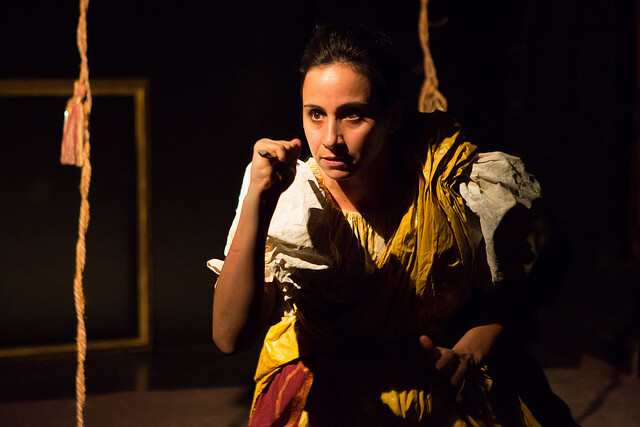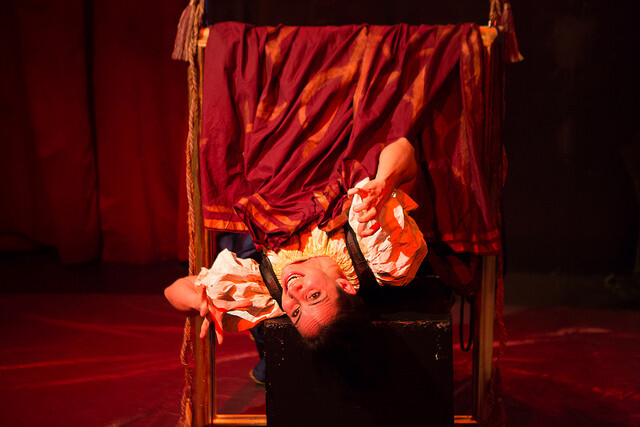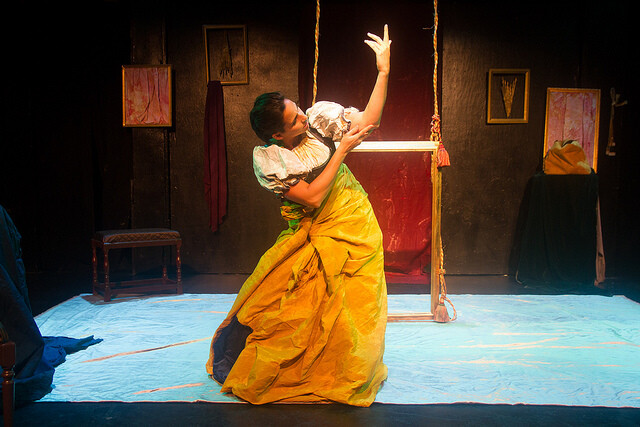“I say this, that everything I have said is the truth,
and that if it were not the truth I would not have said it.”
Who said the above quote? Was it an actress, a painter, a singer, a doctor, a college student, an Olympic gymnast? Was it Dr. Christine Blasey Ford, Rose McGowan, Kesha, Tarana Burke, Anita Hill? Was it said in a courtroom, on a theatre stage, on a television screen? Was it written in the Bible? Was it all of the above?
This quote was actually delivered by Italian artist Artemisia Gentileschi during a 1612 trial in which she accused her former teacher, Agostino Tassi, of sexually assaulting her. But these words could just as easily have been heard a week ago, 406 years later. As Artemisia’s Intent asks, when speaking of this unfortunate story that has echoed over and over again for women throughout history, “Who is responsible for this?”
The one-woman show, created by the Anthropologists, tells Gentileschi’s story in her own words, which are eerily akin to those of modern women going through similar struggles. Artemisia’s Intent opened in New York City in February of 2018 and most recently played in Scranton, PA, during the week of the Kavanaugh trial in September. The company, a New York City–based theatre troupe that aims to inspire social action with their work, uses a collaborative and research-based approach, focusing on creating theatre directly from source materials.
By the end of the piece, Gentileschi’s warm welcome has morphed into a warning: we are all complicit in the suffering of women—not only Gentileschi, not only those who are coming forward today, but of women of all time.
Five women—Lynde Rosario (dramaturg), Mariah Freda (performer), Brianna Kalisch (co-conceiver), Irina Kuraeva (visual designer), and Melissa Moschitto (director/writer)—worked together to create this production. But while each devisor eventually assumed a specific role, during the early creative process—what they call the investigative phase—the lines were blurred. Throughout the show’s development, each of the women were able to connect their personal traumas and frustrations as female artists to Gentileschi’s story of being a woman in the Baroque arts.
Freda, who plays Gentileschi, invites the audience into the show with her humor, wit, and confidence. The audience quickly becomes part of her world and, as such, a witness to her story. Gentileschi is portrayed as a confident woman, not just a “victim,” and she is proud to tell her story. For a play centered on such difficult source material, it is filled with levity between the moments of darkness.
Artemisia’s Intent traces Gentileschi’s professional and personal growth from teenage art student, through her assault trial, and eventually to the height of her artistic career. Her story is intercut with the transcripts of modern sexual assault trial testimonies, demonstrating how hauntingly similar the language is now to the Baroque era. Questions asked of Gentileschi are indistinguishable from those asked of Emily Doe in the Brock Turner case. By the end of the piece, Gentileschi’s warm welcome has morphed into a warning: we are all complicit in the suffering of women—not only Gentileschi, not only those who are coming forward today, but of women of all time.












Comments
The article is just the start of the conversation—we want to know what you think about this subject, too! HowlRound is a space for knowledge-sharing, and we welcome spirited, thoughtful, and on-topic dialogue. Find our full comments policy here